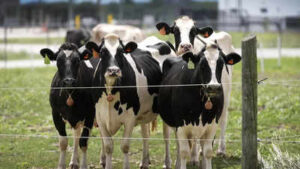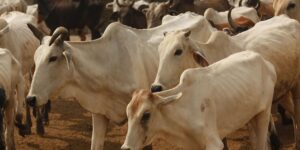
In the ever-evolving world of dairy markets, challenges persist, casting shadows on the global dairy farming industry. However, amidst these persistent challenges, there is a glimmer of hope—a potential rebound appears to be on the horizon.
Rabobank, a specialist in rural lending, recently released its quarterly report, shedding light on the complex dynamics at play in the global dairy market. According to their analysis, dairy farmers worldwide may continue to face financial strain, largely due to the ongoing imbalance in the Chinese dairy market. However, there is an intriguing twist in this tale—a resurgence in demand, which could potentially outpace milk output recovery, might usher in a bullish trend that could extend into 2024.
Rabobank’s report, titled “Progressing Past the Pain,” unveiled on September 13, 2023, paints a comprehensive picture of the challenges facing the dairy industry. The report highlights several factors contributing to the prolonged recovery of dairy demand in China, the world’s largest dairy importer. Economic uncertainties and sluggish growth in China have cast doubts on the prospect of a robust demand recovery, a prerequisite for stabilizing global dairy markets, as pointed out by Emma Higgins, Senior Agricultural Analyst at Rabobank.
China’s milk production has started to decelerate, a trend expected to persist throughout 2023 and into 2024. Nevertheless, a complete rebalance of the Chinese dairy market remains elusive. The reduced demand for dairy imports from China has caused a ripple effect, leading to decreased global dairy prices, ultimately affecting global production.
Emma Higgins states, “Milk production from the Big 7 export regions – New Zealand, Australia, the EU, the US, Uruguay, Brazil, and Argentina – is now anticipated to grow by 0.3 percent year-on-year in 2023, downgraded from last quarter’s estimate of 0.7 percent.”
However, there is a glimmer of hope on the horizon. Rabobank observed that while dairy prices are currently subdued, they might soon stage a recovery. After witnessing a significant drop in August, prices at the Global Dairy Trade auction showed signs of a modest rebound earlier this month. Farmers are now eagerly awaiting the results of the next auction to confirm whether the market has hit its low point.
The report also suggests that the deceleration in global milk production may eventually align with the modest growth in demand in most regions, preventing further drastic price declines. Despite the immediate challenges facing dairy prices, Emma Higgins points to a “ray of optimism” for the months ahead.
“Demand from Mexico, the second-largest dairy importer, has also been robust, supported by a stronger peso,” she noted. Additionally, Higgins emphasized that although the Global Dairy Trade (GDT) index had weakened, demand from China, which typically accounts for 30% to 40% of GDT sales since Q2, had not completely vanished.
Rabobank interprets these factors as potential indicators of a demand-driven resurgence in global dairy markets in the coming months. However, it’s clear that farmers must navigate the current financial challenges diligently. The influence of Chinese import demand remains a pivotal factor in shaping the industry’s future. Notably, for January-July 2023, China’s whole milk powder imports have seen a 40% decline compared to the previous year.
While futures market contracts have rallied by 20% since August, some market players remain cautious. Stu Davison, a consultant with Chicago-based commodities house HighGround Dairy, suggests that despite this rally, the fundamental dynamics of the market have not fundamentally shifted. He maintains a “neutral to bearish” outlook on the market’s prospects for the next week.






